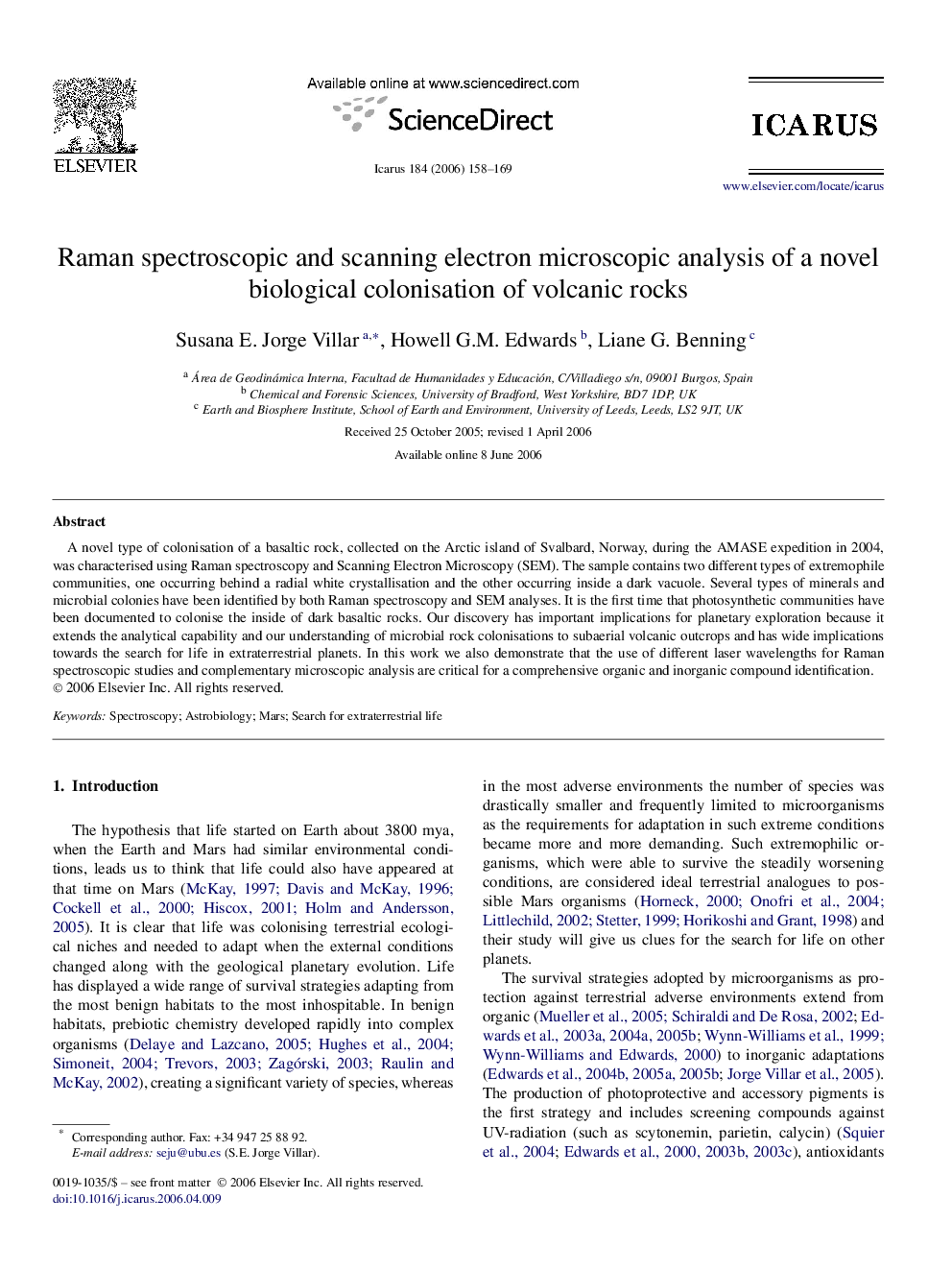| Article ID | Journal | Published Year | Pages | File Type |
|---|---|---|---|---|
| 1775975 | Icarus | 2006 | 12 Pages |
A novel type of colonisation of a basaltic rock, collected on the Arctic island of Svalbard, Norway, during the AMASE expedition in 2004, was characterised using Raman spectroscopy and Scanning Electron Microscopy (SEM). The sample contains two different types of extremophile communities, one occurring behind a radial white crystallisation and the other occurring inside a dark vacuole. Several types of minerals and microbial colonies have been identified by both Raman spectroscopy and SEM analyses. It is the first time that photosynthetic communities have been documented to colonise the inside of dark basaltic rocks. Our discovery has important implications for planetary exploration because it extends the analytical capability and our understanding of microbial rock colonisations to subaerial volcanic outcrops and has wide implications towards the search for life in extraterrestrial planets. In this work we also demonstrate that the use of different laser wavelengths for Raman spectroscopic studies and complementary microscopic analysis are critical for a comprehensive organic and inorganic compound identification.
